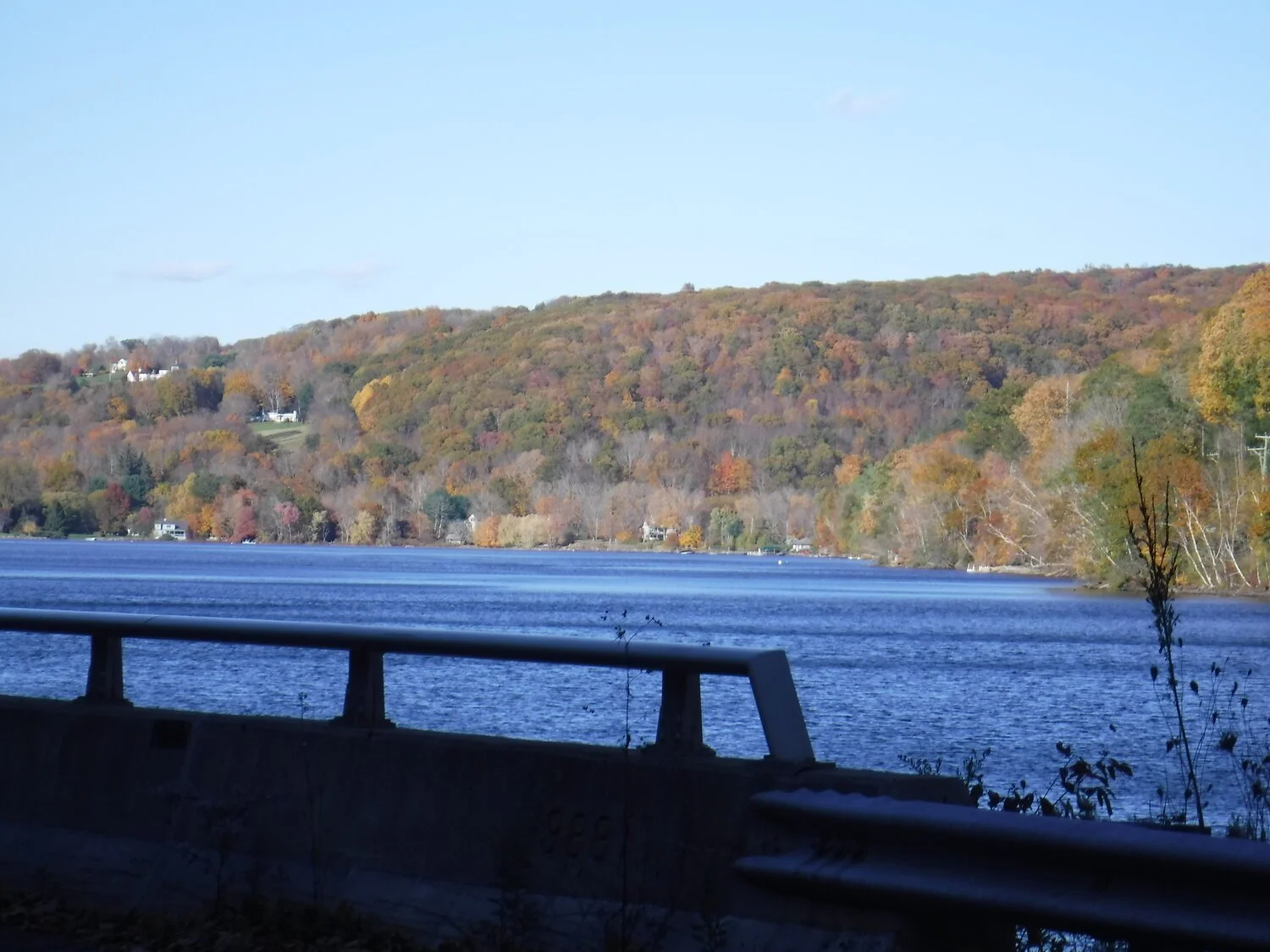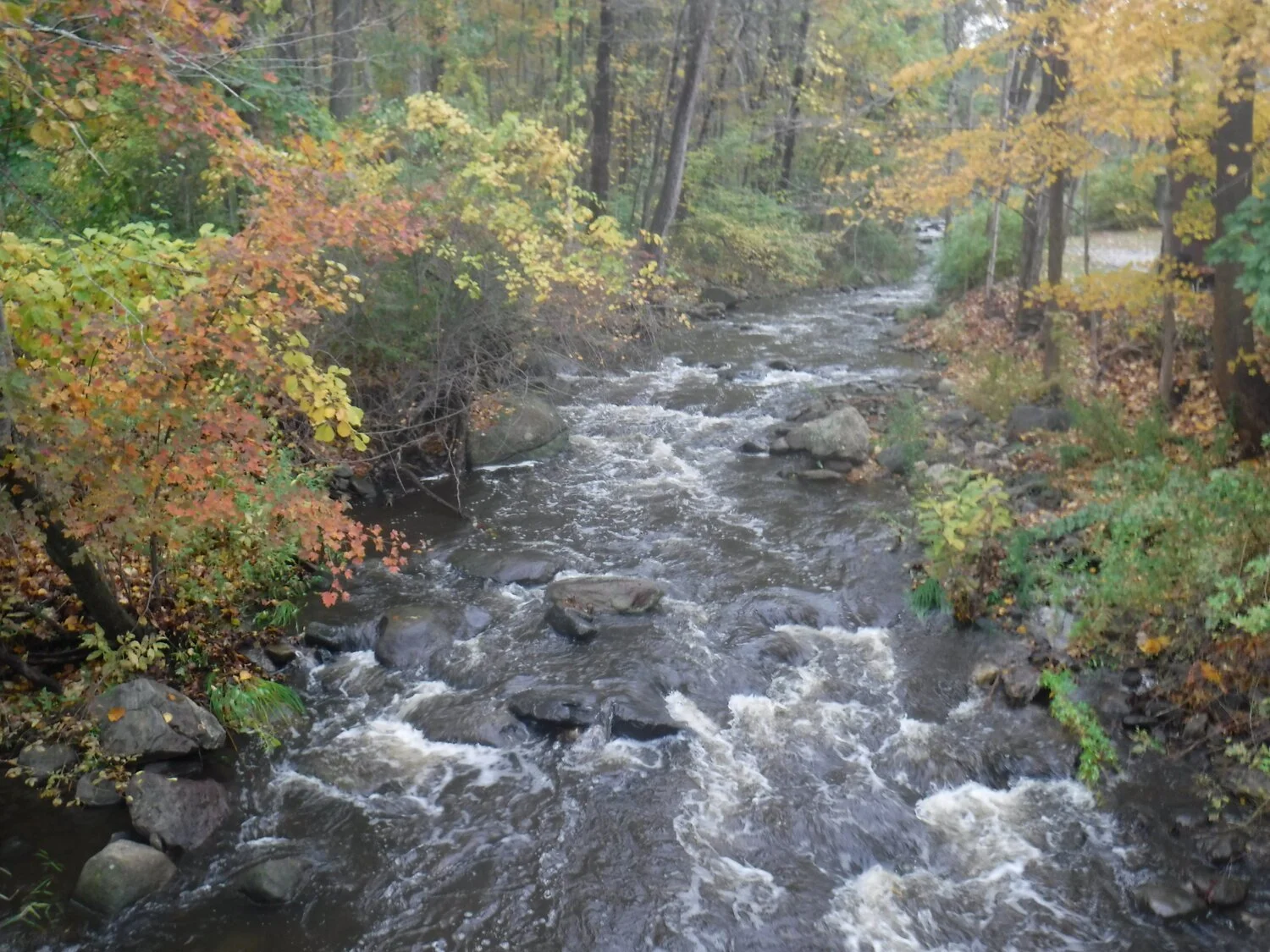Protecting Waramaug’s watershed: Fall tips
Lake Waramaug is only as clean as its watershed. Every person’s actions, from the lakeshore to the top hills of Warren (see watershed map below), dictates the health of the lake this Fall, and how it will behave next year.
Lake Waramaug’s major tributary is Sucker Brook—it provides approximately 60 percent of the lake’s water. The lake also has a residence time of one year. In other words, it takes a year for a single of drop of water that enters the lake, to leave it. This means the water coming from Sucker Brook is extremely influential to the lake as the nutrients it carries have an entire year to negatively impact water quality. Sucker Brook’s health is dependent on the water that flows off residents' lawns, the roads, the forests and farms. A healthy, maintained watershed is a major factor in protecting Lake Waramaug.
Especially now in the Fall, Lake Waramaug is prime for possible small cyanobacteria (blue-green algae) blooms in the coves. Northwestern Connecticut is in a drought. The lake level is very low, and Sucker Brook/its tributaries have very little water in them. With less water, excess nutrients will have a larger concentration in the streams versus when there is more water to buffer the nutrients and pollution. What we do in the lake’s watershed has an amplified or larger effect on the lake in its more vulnerable state.
Here are some tips on what you can do to help protect Lake Waramaug this Fall.
Do not dump leaves from your property into the lake or into Sucker Brook/streams around the lake. While natural-falling leaves entering streams and lakes are important to balancing aquatic ecosystems, excess leaves and plants contain high levels of phosphorus and organic matter. This can promote excess green algae and cyanobacteria growth overtime. If you hire land care workers for your property, ask them not to dump your excess clippings into the lake’s water or tributaries.
Do not burn leaves, brush or excess clippings near waterbodies or watercourses. The nutrients contained in this organic matter left behind after the burn will end up in the lake’s waterways as pollution during the next rain event.
During Fall, a lot of leaves and debris run into the catch basins that surround Lake Waramaug—clogging them, and ultimately adding excess nutrients to the lake. If you see excess debris on top of the grate, feel free to remove the excess material onto surrounding grass or off the road. But be careful for oncoming cars—never do it alone.
If you plan on doing any construction, make sure all exposed soils are always covered. Soils eroding from exposed areas is one of the quickest ways that water quality is degraded, as soil contains high levels of nutrients. These practices will help protect the lake against the adverse effects of Climate Change, such as drought and increase severe storms. Native plants can be used to stabilize soils and buffer waterways. Avoid removing, if possible, these important edge plantings, trees and vegetation from lakefront and streamfront areas, as they stabilize shorelines and prevent large erosion events.
As wildlife migrates, do not feed the animals. Specifically, do not feed waterfowl. It is optimal to encourage waterfowl to migrate to the south during winter. We do not want to give them a reason to stay, as they add excess nutrients and bacteria through their droppings.
If there is an early snowstorm, try to use as little road salt as possible on your walkways. The negative water quality impacts of increased road salt usuage is evident across the Northeast. Early snow often melts quickly, and moves salt directly into surrounding waterways and the lake. This can be toxic to aquatic life, promote aquatic invasive species who are more salt tolerant, and cause heavy metals from soil and roadways to be released into runoff.
Written by: Kelsey Sudol, Research Assistant
October 20, 2020





